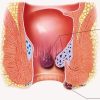- Empty cart.
- Continue Shopping
How to Recognize Early Signs of Dry Eye Syndrome

Dry Eye Syndrome is a common condition that occurs when the eyes don’t produce enough tears or the tears evaporate too quickly. Recognizing the early signs of this condition is crucial for timely intervention and proper eye care.
1. Persistent Eye Discomfort
– Gritty or Sandy Sensation
If you frequently feel like there’s something in your eye, such as sand or grit, it could be an early sign of Dry Eye Syndrome.
– Burning or Stinging Sensation
Persistent burning or stinging sensations in your eyes, especially after activities like reading or staring at screens, may indicate dryness.
2. Redness and Irritation
– Frequent Redness
Chronic redness, even when you’re well-rested and not experiencing allergies or infections, can be a sign of underlying eye dryness.
– Watery Eyes as a Response
Ironically, Dry Eye Syndrome can lead to excessive tearing as your eyes try to compensate for the lack of proper lubrication.
3. Blurred or Fluctuating Vision
– Intermittent Blurriness
Dry eyes can cause occasional blurriness, particularly when engaging in activities that require sustained focus.
– Difficulty Wearing Contact Lenses
Contact lens wearers may experience increased discomfort and blurred vision, which can be an early indication of dryness.
4. Sensitivity to Light
– Photophobia
If you find yourself more sensitive to light than usual, it could be an early sign of Dry Eye Syndrome.
5. Stringy Mucus in or around the Eyes
– Increased Mucus Production
A surplus of stringy mucus around the eyes, particularly in the morning, can be indicative of Dry Eye Syndrome.
6. Eye Fatigue and Discomfort after Screen Time
– Digital Eye Strain
Feeling tired or strained eyes after prolonged screen time may be an early indicator of dryness.
7. Episodes of Excessive Tearing Followed by Dryness
– “Rebound” Tearing
Some individuals with Dry Eye Syndrome experience excessive tearing followed by a period of increased dryness, creating a cyclical pattern.
8. Difficulty with Night Driving
– Increased Glare Sensitivity
If you find that headlights or streetlights cause more glare at night than they used to, it could be related to dryness.
Conclusion
Recognizing the early signs of Dry Eye Syndrome is crucial for seeking timely intervention and preventing further discomfort or potential complications. If you experience any of these symptoms consistently, it’s important to consult an eye care professional for a thorough evaluation and appropriate treatment. Remember, maintaining good eye health contributes to overall well-being and quality of life.








